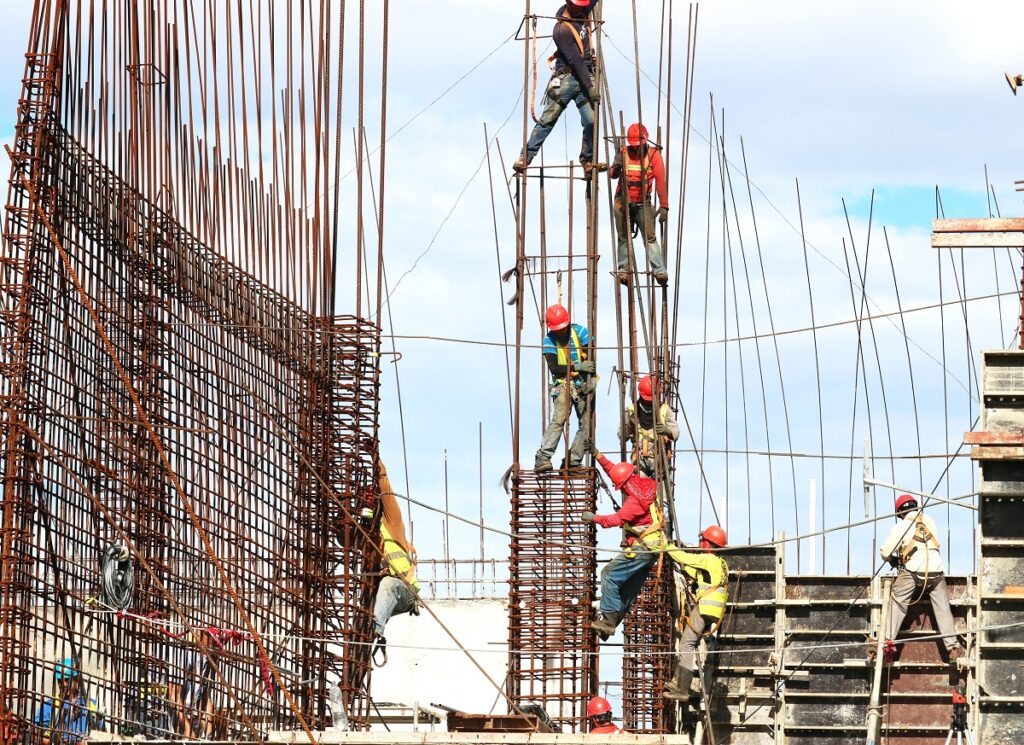The 7 Components of a Bulletproof Construction Schedule

Here are seven ways to build a robust construction schedule to help you deliver projects on time and within budget.
A significant percentage of projects run over their construction schedule and beyond the originally planned budget. Some estimate as few as 30% of schedules finish within the expected timeline. Many notable construction schedules have gone significantly over budget and beyond the originally planned schedule. When it’s a mega-project in the public eye, it’s even more glaring. What once was sold to the public as an important taxpayer-funded initiative gradually is seen as a boondoggle that will never end.
Keep reading for,
Root Causes to Construction Schedule Changes
There are many root causes to schedules missing their timelines. Most of these reasons fall in the categories of design flaws, increased scope, inaccurate estimates, and unforeseen conditions. How to address them depends on the scope and size of the project. Mitigating each of these will reduce the number of overages to the construction project.
Design Flaws
Design flaws are primarily the domain of architects and owners. It’s up to them to employ their expertise and produce robust, thorough designs without errors that will surface during the build phase. BIM-powered design systems have made great strides in reducing design flaws. Building Information Modeling is a process that, among other things, migrates your building designs from 2D to 3D. This transition ensures that construction crews shouldn’t find themselves in situations where the plans aren’t physically possible to complete out in the field.
Scope Increase
Scope increase is invariably part of every construction project. Owners may change their minds. Construction crews may find that conditions weren’t represented accurately and thus expect more money to pay for their efforts. Laws could change that require more work to achieve local compliance. Or accidents could occur that significantly increase the amount of work. There are many causes to scope increase, all of which add time and budget to the construction schedule.
Inaccurate Estimates
Inaccurate estimates are typical, as predicting what a project will cost. Material costs may change, or labor costs as well as availability. Conditions in the field may be different than expected. Sometimes calculation errors are the root cause of estimates being off.
Unforeseen Conditions
Unforeseen conditions may range from weather to rocks to water. Once you break ground, you never know what you’re going to find. Part of the strength of construction crews is their ability to adapt to almost any situation. But when those situations come up, it will cause the planned schedule to change.

Building a Robust Construction Schedule
At Linarc, we pride ourselves on creating construction schedules that can withstand the numerous factors that may cause them to slip. While there will always be circumstances out in the field or from the front office that will cause schedules to change, building a tool that gracefully handles the changes can help teams out. Anyone can make a Gantt chart. Making one that maps to people’s daily timesheets, which connects to the overall timeline, helps crews stay on track.
We identified seven core areas that construction schedules need to include. Linarc’s master scheduler consists of each of these, so when one of them gets out of sync with the original plan, we’ll let you know about it. We can also leverage these to proactively alert you to actions you can take to keep pace with the current schedule. Here are the core components that power Linarc’s scheduler.
Construction Schedule Tasks
Fundamental to any construction schedule is a series of tasks, and each task needs to have clear instructions for the work. These instructions include the plans and resources, including a budget, timeline, materials, equipment, and contractors.
Linarc uses the Work Breakdown Structure (WBS) within its master schedule. Each task is assigned a job code, so everything stays organized. More extensive tasks are broken down into smaller, more manageable tasks and tracked to completion. At any given point, management and project overseers can gauge the status of any job and where it maps with the projected timeline. There’s no delay in communication about people’s progress as they’ll know where things stand by the end of each day.
Maintaining clear progress updates for each task ensures your entire project will be 100% visible to all project leaders. Company-wide visibility helps keep everyone on track.
Time
Map tasks to a realistic timeline. When Tasks are dependent on others, they’ll be sequential. In doing so, Linarc can assist project planners with adapting to any changes.
The timeline is built based on the WBS, and so each task is monitored based on its assigned job code. Doing so gives Linarc a lot of power to help optimize your project. If one crew is taking longer than others or more prolonged than industry standards, we can notify you of that. Use this information to select the top-performing contractors.
Managing time also helps with materials and equipment allocation, which we’ll discuss below.
Materials
Materials are essential to most construction schedules. Lumber, paving stones, concrete, aggregate, rebar, panels, and scaffolding are a few of the needed items for a construction project. Every project is different in its material demands, but getting them on site is very similar.
First, determine how much you need and when, identify the vendor to reach out to, and submit your purchase order. Arrange transportation for materials and crew.

Since Linarc ties materials to the master construction schedule, it manages the materials procurement and allocation process. The entire schedule is analyzed, and projected material needs for crews throughout the job site are determined. When it’s time to submit your purchase order, we will let you know and prepare the procurement lists for you. Review them and have your project admins make the calls.
Since Linarc can manage multiple projects for the same construction company, we offer the option to combine purchases company-wide. Doing so lets you save money by ordering in bulk, and simplifies your relationships with your suppliers.
When job schedules are adjusted, either faster or slower than expected, Linarc will adapt its material management to meet the current needs of your project. We let you minimize the times crews are held up over materials not being readily available on site.
Equipment
Equipment procurements are large, often fixed cost items for any job site. As any passing observer knows, it’s not uncommon for equipment to go unnoticed and underutilized during various phases of the construction process. Bulldozers and cranes may only be needed periodically.
Linarc makes equipment management better than it’s ever been. To start, we track equipment for each task required, so we know precisely when and where a project will need various types of equipment. We can then optimize your purchasing or rental of such items to don’t spend any more time or money on it than necessary.
We also track equipment company-wide, so it could potentially be transferred across jobs if another project could use an item. Utilizing them could save a lot of money, depending on transportation costs.
Keeping an itemized accounting of each piece of equipment can be a daunting task and may sometimes get disorganized or fall out of date. Is that cleanly tracked when someone sends a bobcat back to the rental company, so there’s a clean record of where it is? With Linarc, we monitor each piece of equipment for you, so it’s all accounted for in one, easily accessible place.
Construction Schedule Crew & Contractors
The heart and soul of each construction schedule are the crew and contractors doing the work. Even the best plans may go amiss if the team isn’t working at its best. The judgment calls and personal expertise of the hard-working men and women make or break a project.
Linarc ties crew to tasks within the master schedule which gives unprecedented insight into the daily workings of your construction project. Each task has several crew members allocated hours for each crew member. The jobs leverage the WBS format and can track the expected hours with the actual time spent.
At the end of each day, crew members can submit their timecards directly within the app, letting everyone know the current status of the job.

They can also upload pictures to show work completed or submit them for questions to project leaders. The dialogue between the crew and front office gives construction teams the ability to work in lockstep with everyone on the project.
When a crew member is out that day, the overall schedule is adjusted to account for it. If a different project needs workers, Linarc will highlight that for project leaders. That way, they can keep their workforce working at optimal efficiency.
Construction Budget
The budget drives the project. When funds run out, work stops until such a time as the funds become available again. Keeping a close eye on your budget will ensure construction executives are always informed.
At Linarc, we include the budget within each task in the master schedule. Moreover, we break it into two sections – expected and actual. Doing so allows us to create immediate notifications for project managers and construction owners if the budget goes over.
On a construction site, every hour and minute counts and materials and equipment. Keeping the budget in the master scheduler can ensure that the budget stays as close to its projections as possible.
Documents, Plans, and Media in the Construction Schedule
Various mission-critical documents drive all construction schedules. These include contracts plans, estimates, schedules, images, videos, licenses, permits, RFIs, Submittals, Change Orders, meeting notes, and more.
These documents connect to specific tasks, so at Linarc, we give you the ability to attach documents to jobs with the master scheduler. The most important document for a task is the plans. Plans can also include any markup or meeting notes with those plans to clarify any sections for the crews doing the work.
Uploading images for questions that come up during the job or as proof of work completed will go a long way in preventing any questions or disputes over a contract. If contractors have a question, take a picture or video and send it to the foreman or other project leaders to follow up.
Many documents may change throughout the project, such as the original plans. As the architects may make revisions and updates according to the circumstances out in the field, it might be easy for crews to use an older version accidentally.
With Linarc, the latest version of the plans is readily available to crews.Keeping a construction schedule on track is no easy task. The many factors that can cause schedule delays are difficult to manage and plan around. Linarc gives construction crews and the teams unique control over their construction project schedules. We do so by tying every critical aspect of the project to the schedule and leveraging that information to adapt to any unexpected changes. We also proactively alert project planners to actions they need to take to keep the schedule moving forward as expected.
At Linarc, we give construction companies the tools they need to keep their construction project schedules moving forward and on track.
What’s your experience keeping construction teams in sync with their project schedules? What are the main reasons they’ve missed their targets? Tell us about it here.
How to develop a Bulletproof Construction Schedule?
Many construction projects go beyond budget and initial schedule due to design flaws, increased scope, inaccurate estimates, and unforeseen conditions.
Here are seven steps to build a sound construction schedule to achieve a successful project delivered on time and within budget.
- Construction schedule tasks
The construction schedule is a series of tasks. The tasks must include well-defined instructions regarding the design plans, resources, budget, timeline, materials, equipment, and contractors—Use Work Breakdown Structure (WBS) within Linarc’s master schedule. Extensive tasks are broken down into smaller, more manageable tasks and tracked to completion. Each task in WBS is assigned a job code to keep everything organized.
- Time is crucial
Tasks are interdependent and hence sequential. If one team takes longer than planned, the whole schedule gets disrupted. To avoid this, map tasks to a realistic timeline keeping these changes in mind. Linarc’s program notifies the project managers of any change and helps modify the schedule.
- Materials availability
Ample and on-time availability of materials is essential to continuous, uninterrupted construction schedules. Plan your material delivery to support the planned production.
Ascertain how much material you need and when. Identify the vendors and submit your purchase order. Linarc’s software connects materials to the master construction schedule and manages the materials procurement and allocation process. - Equipment tracking
Determine the equipment required for each task and when and where a project may need the equipment. Linarc monitors and provides information about the requirement of equipment across companies. It gets easier to mobilize the equipment according to need across various locations.
- Construction schedule crew & contractors
Crew and contractors are at the heart of every construction. Their capability, expertise, and dedication are vital to the success of a project. Linarc connects the crew to tasks within the master schedule. The program assigns jobs based on the WBS format and gives insight into the daily workings of a construction project.
- Construction Budget
Keep a close tab on the budget for material, equipment, and workforce. Inaccurate budget estimates or delays can play havoc on the project. Actual conditions and needs on the site differ from what is estimated. Linarc includes the budget in its master schedule and breaks it into the expected and actual sections. It notifies the project manager of any budget overruns on the site.
- Documents, Plans, and Media in the Construction Schedule
Keep your critical documents, plans, estimates, RFIs, Submittals, and Change Orders, in one place and readily available for view. Linarc connects these documents to specific tasks in its master scheduler and keeps any plan or change readily available to teams.
Consider these steps to build a concrete schedule and reduce the chances of overruns or shortfalls in the construction project.
Summary of Building a Robust Construction Schedule
Keeping a construction schedule on track is no easy task. The many factors that can cause schedule delays are difficult to manage and plan around. Linarc gives construction crews and the teams unique control over their construction project schedules. We do so by tying every critical aspect of the project to the schedule and leveraging that information to adapt to any unexpected changes. We also proactively alert project planners to actions they need to take to keep the schedule moving forward as expected.
At Linarc, we give construction companies the tools they need to keep their construction project schedules moving forward and on track.
What’s your experience keeping construction teams in sync with their project schedules? What are the main reasons they’ve missed their targets? Tell us about it here.




